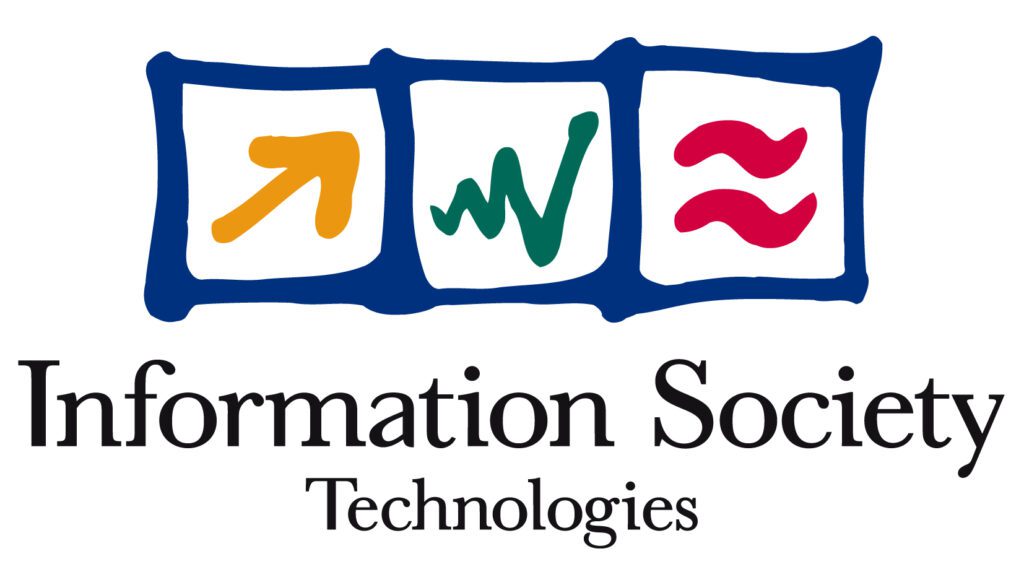Information technology’s (IT) significance cannot be overstated in today’s interconnected world. It’s the silent engine that powers our daily lives, from facilitating communication to driving innovation across industries. In this comprehensive blog, we’ll delve deep into the realm of IT, exploring its importance, diverse types, pivotal roles, and the exciting vistas it opens for the future. But let’s start at the beginning—what is the importance of information technology?

The Importance of Information Technology: A Digital Backbone
Information technology is the digital backbone of the modern world. It’s not just a set of tools or gadgets; it’s a transformational force that touches every aspect of our lives. Here’s why it matters:
Efficiency and Productivity: IT automates processes, reducing human effort and errors. From manufacturing to office tasks, technology streamlines operations, boosting efficiency and productivity.
Global Connectivity: IT shrinks the world. The internet connects people, businesses, and governments across borders, fostering collaboration and driving globalization.
Enhancing Communication: IT has revolutionized how we communicate, from email to social media. It’s no longer constrained by geographical barriers, making instant, global communication a reality.
Data Management: In the era of big data, IT manages vast datasets, extracting valuable insights that drive decision-making in fields from healthcare to finance.
Security: IT safeguards sensitive information, protecting it from cyber threats and ensuring privacy.
Innovation: IT fuels innovation. From smartphones to self-driving cars, it constantly pushes the boundaries of what’s possible.
Social Impact: IT has the power to transform societies, bridging gaps in education, healthcare, and economic opportunities.
Education: IT enriches education, making learning more engaging, accessible, and customizable.
Now that we’ve explored the importance let’s venture into the different types of information technology.
Types of Information Technology
IT is not a monolithic entity; it’s a diverse ecosystem encompassing various technologies. Here are some key types:
Hardware: This includes computers, servers, and devices—everything tangible that powers IT systems.
Software: Software programs are the digital instructions that enable hardware to perform specific tasks. Operating systems, apps, and games are examples.
Networking: IT networks, like the internet, connect devices and enable data exchange. Routers, switches, and protocols form the backbone of networking.
Cybersecurity: This protects IT systems from cyber threats, encompassing firewalls, encryption, and antivirus software.
Cloud Computing: Cloud technology allows internet access to data and applications, revolutionizing data storage and accessibility.
Artificial Intelligence (AI) and Machine Learning (ML): These technologies enable machines to mimic human intelligence and learn from data, leading to innovations like virtual assistants and predictive analytics.
IoT (Internet of Things): IoT connects everyday objects to the internet, enabling them to collect and exchange data, from smart thermostats to wearable fitness trackers.
Biotechnology: IT is pivotal in genomics, drug discovery, and bioinformatics, accelerating advances in healthcare.
The Roles of Information Technology
The importance of information technology manifests in a multitude of roles, each contributing to our evolving world:
Business Enabler: IT transforms business operations, from automating workflows to enhancing customer experiences. E-commerce, supply chain management, and data analytics drive profitability.
Communication Facilitator: IT powers instant global communication through email, video conferencing, and social media. It connects people across continents, fostering collaboration and cultural exchange.
Education Enhancer: In the realm of education, IT is a game-changer. E-learning platforms, interactive simulations, and virtual classrooms make learning more engaging and accessible.
Healthcare Innovator: IT advances medical research, patient care, and healthcare administration. Electronic health records, telemedicine, and AI-driven diagnostics revolutionize healthcare delivery.
Entertainment Provider: From streaming platforms to immersive virtual reality experiences, IT transforms how we consume entertainment, making it more accessible and interactive.
Scientific Advancement: IT accelerates scientific discovery through computational modeling, data analysis, and simulations, aiding research in fields like climate science and astronomy.
Social Impact Enabler: IT can address societal challenges. For example, mobile banking services empower the unbanked, and telemedicine brings healthcare to remote areas.
Now, let’s peer into the future and see how IT will continue to shape our world.

The Future of Information Technology
The future of information technology is a realm of boundless potential where innovation knows no limits. Here are some key trends that will define the IT landscape:
AI and Automation: AI will continue to evolve, automating routine tasks across industries. From self-driving cars to chatbots, AI’s applications are limitless.
5G Connectivity: The rollout of 5G networks will revolutionize connectivity, enabling faster data transfer and supporting emerging technologies like augmented reality and the IoT.
Quantum Computing: Quantum computers will tackle complex problems currently unsolvable with classical computers, revolutionizing fields like cryptography and materials science.
Biotechnology Integration: IT and biotech will converge, accelerating advances in personalized medicine, genomics, and drug discovery.
Blockchain: Blockchain technology will transform industries like finance, healthcare, and supply chains by enhancing security and transparency.
Cybersecurity Innovation: As cyber threats evolve, IT will respond with innovative security solutions to safeguard sensitive data and privacy.
Green IT: Sustainable practices will gain prominence in IT, from energy-efficient data centers to eco-friendly device manufacturing.
Human-Machine Collaboration: We’ll see increased collaboration between humans and machines, leading to breakthroughs in fields like robotics and exoskeletons.
Technology for Social Impact: Bridging Gaps
Beyond technological advancements, IT has the potential to drive profound social impact. It can bridge gaps and address societal challenges in the following ways:
Education: IT enables access to quality education, even in remote areas. Online courses, digital textbooks, and interactive learning platforms democratize learning opportunities.
Healthcare: Telemedicine connects patients to healthcare providers, irrespective of geographical barriers. Wearable health tech and AI-driven diagnostics improve healthcare outcomes.
Economic Empowerment: E-commerce and online marketplaces open doors for small businesses and entrepreneurs to reach a global market, allowing them to succeed.
Financial Inclusion: Mobile banking and digital wallets provide financial services to the unbanked and underbanked, fostering economic inclusion.
Environmental Sustainability: IT solutions like smart grids and monitoring systems enhance resource efficiency and reduce carbon footprints.
Disaster Response: IT aids disaster preparedness and response through real-time data collection and analysis.
Importance of Technology in Education: A Transformative Force
Education is one of the arenas where the importance of technology is most evident. Here’s how IT is revolutionizing the way we learn:
Accessibility: IT makes education accessible to a global audience. Online courses and virtual classrooms allow learners to access quality education from anywhere.
Personalization: Adaptive learning technologies tailor educational content to individual needs and pace, ensuring no learner is left behind.
Interactivity: Digital tools, simulations, and virtual labs engage students in hands-on learning experiences.
Remote Learning: IT enables remote learning, making education resilient despite disruptions like the COVID-19 pandemic.
Analytics: Learning analytics harness data to track student progress, enabling educators to provide timely interventions and support.
Global Collaboration: Online platforms facilitate international collaboration among educators and students, fostering cross-cultural understanding.
In conclusion, information technology is the lighthouse guiding humanity through the ever-evolving sea of knowledge and innovation. Its importance reverberates throughout our lives, from business and education to healthcare and entertainment. As we embrace the future, we find that the potential of IT knows no bounds. It’s a catalyst for positive social impact, a driver of scientific progress, and a force that will shape the world for generations to come.
In this digital age, understanding the importance of information technology isn’t just a choice; it’s a necessity. So, whether you’re a tech enthusiast, a student, a business owner, or simply someone curious about the future, keep your eye on the horizon because the journey of IT is one of perpetual discovery and limitless possibilities.
And as you explore this ever-evolving landscape of technology, consider delving deeper into the intersection of human cognition and technological advancement with “The Age of Cognivity” by E.R. Anders. This book is a thought-provoking companion on your journey through the digital world, offering insights into how technology shapes our thinking and our world. It’s a reminder that as we continue to advance technologically, the power of human cognition remains at the heart of our ability to navigate and harness the potential of information technology.

